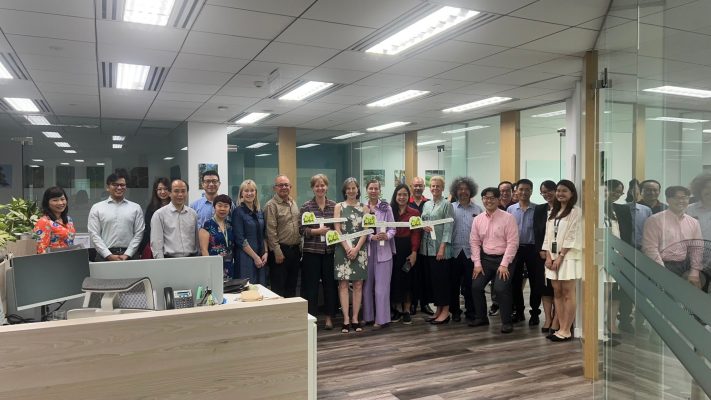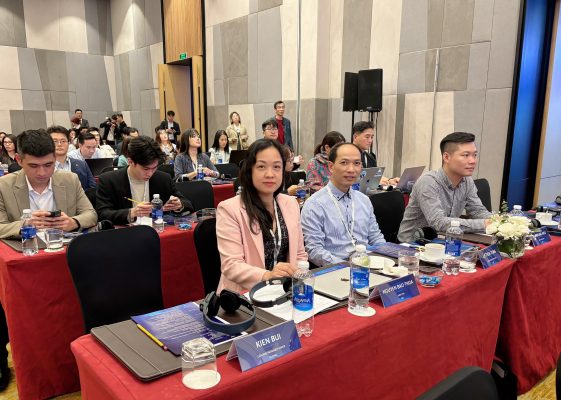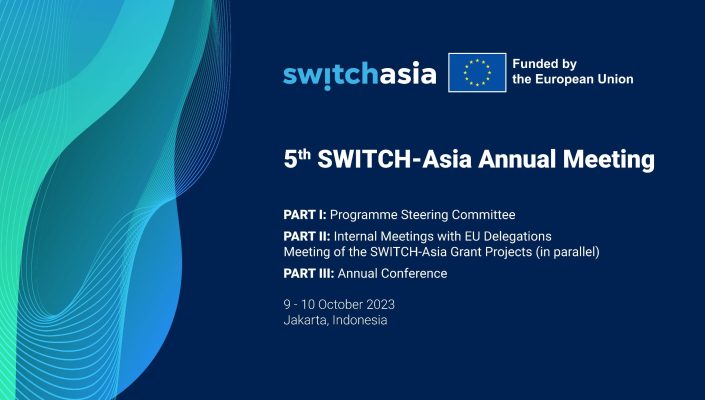Workshop on Agricultural by-products – Renewable resources: New directions for eco-fair agricultural products

|
On September 28, the Eco Fair Project organized an international dialogue workshop on “Agricultural by-products – Renewable resources”. The project “Promotion of supply and demand of Eco-Fair Agri-food processing products in Vietnam” (Eco Fair Project) is co-funded by the European Union of EUR 1.5 million through the SWITCH-Asia Program, in collaboration with the Department of Science and Technology – Ministry of Agriculture and Rural Development (MARD) and organizational partners. The Dialogue Workshop aims to share experiences and connect ecological-fair development, advocating for creating an environment for sustainable production in general and agricultural by-products as a renewable resource in particular. Discuss policies on management and effective use of by-products in agricultural production, encourage investment in processing and application of circular agriculture… Mr Jesus Lavina – Deputy Head of Development Cooperation – EU Delegation to Vietnam said, “For decades, the European Union has been at the forefront of addressing global challenges such as environmental climate change, sustainable production and consumption (SCP). While agriculture contributes to greenhouse gas emissions as well as offers significant opportunities to combat climate change, for example through healthy soil carbon sequestration, providing a renewable source alternative as biogas, agricultural by-products or waste for energy approaches”. Sharing the experience of experts on “Treatment of agricultural by-products”, Associate Professor, Dr. Bui Ba Bong – Former Deputy Minister of Agriculture and Rural Development shared: According to the General Statistics Office, the total volume of agricultural by-products in 2020 of the whole country is over 156.8 million tons, including: · 88.9 million tons of post-harvest by-products from crops and the processing of agricultural products of the crop industry (accounting for 56.7%); · 61.4 million tons of cattle and poultry manure from the livestock industry (accounting for 39.1%); · 5.5 million tons from forestry sector (accounting for 3.5%); · and about 1 million tons from the fishery industry (accounting for 10.6%). Currently, the percentage of crop by-products (peanut shells, corn stalks, rice straw, cassava stalks, soybean husks, firewood…) that are collected and used accounts for only 52.2%. In livestock production, only about 20% of manure is used effectively. Meanwhile, the Netherlands has a smaller number of livestock and poultry than our country: 3.9 million cows, 12.4 million pigs, 87.2 million chickens, but the amount of manure produced is 76.2 million tons/year. As a result, the rate of replacing chemical fertilizers with organic fertilizers is very high. The percentage of nitrogen (N) from organic fertilizers accounted for 54%, chemical fertilizers accounted for 38%; The percentage of phosphorus (P2O5) from organic fertilizers accounts for 90%, chemical fertilizers accounts for 6%. Currently, the Netherlands is the world’s second largest exporter of agricultural products with an agricultural area of only about 2 million hectares. The Netherlands is currently a pioneer in the development of circular agriculture” – Assoc. Prof. Dr. Bui Ba Bong shared. In Vietnam, Mr. Nguyen Hong Long, Director of Center for Creativity and Sustainability Study and Consultancy (CCS) shared that Vietnam’s biomass potential is over 160 million tons/year, equivalent to 60 million tons of DO oil, including: Cultivation by-products: rice husks, straw, rice straw, bagasse, corn stalks, industrial crops (cassava, rubber, coconut…), seeds (peanut, macadamia, cassava), fruit trees…; Forestry by-products: shredded paper, wood chips…; Livestock by-products: manure from cattle and poultry farms; urban solid wastes. The benefit of technology is to turn waste into income (for example, turning agricultural by-products into fuel can generate 1 ton of biomass with a value of 600,000 – 2,500,000 VND). Besides, it helps to eliminate dual pollution caused by burning fossil fuels for energy and burning biomass in fields (reducing 700 g CO2 e/kg biomass fuel). At the same time, it improves the working conditions of users and workers because they do not have to be exposed to harmful fumes; Creates a new ecosystem with biomass gasification equipment, fuel supply, biochar use and associated services; and improves soil and ecosystem quality with biochar. According to the Center for Creativity and Sustainability Study and Consultancy (CCS), the country’s biomass potential is currently around 160 million tons; The economic potential is 60 million TOE (tons of oil equivalent), parallel to about $46.5 billion. This profit has the potential to create jobs for 180,000 people and benefit 13 million households and 900,000 food service businesses. With industrial market potential, at least 40 sub-sectors can apply thermal energy from biomass gasification technology. Replication is very high, not only in Vietnam but also in other developing countries. With such great potentials, PhD. Nguyen Bao Thoa, Director of the Vietnam Rural Industries Research and Development Institute (VIRI) shared at the conference: “The Eco-Fair project was born with the mission of changing behavior of organizations and individuals in order to take positive measures on society and improve the environment. We aim to inspire sustainable values with society and the environment through the implementation of project activities such as raising awareness and capacity of the business community and consumers, building codes of conduct on sustainable production and consumption in the industry, supporting businesses to develop products in the direction of circular production, making use of agricultural by-products to create valuable products.” Ms. Luu Hai Thuy, market expert of VIRI emphasized further: “Many countries around the world have successfully utilized agricultural by-products into productive inputs or value-added products. Some agricultural by-products of Vietnam are available at leading brands in the world, for example the famous HERMES has just launched a jewelry product line from buffalo horn “Made in Vietnam” with prices ranging from a few million to several dozen. million per product. Therefore, we hope that agricultural products as well as products from agricultural by-products of Vietnam will build a brand in domestic and foreign markets.” Bảo Ngọc (Source: https://congthuong.vn)
|





